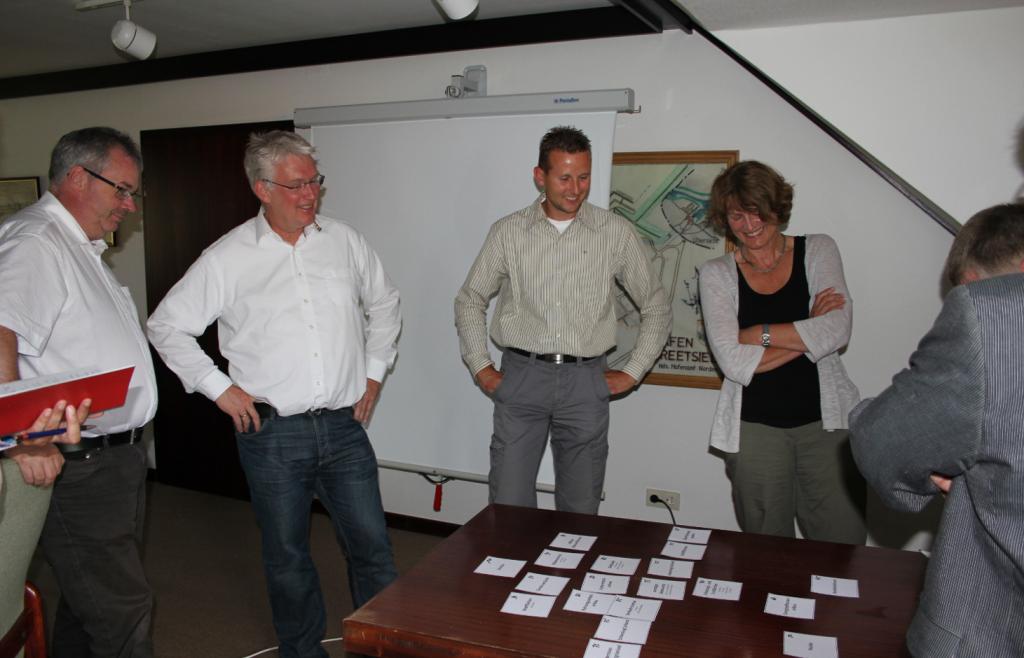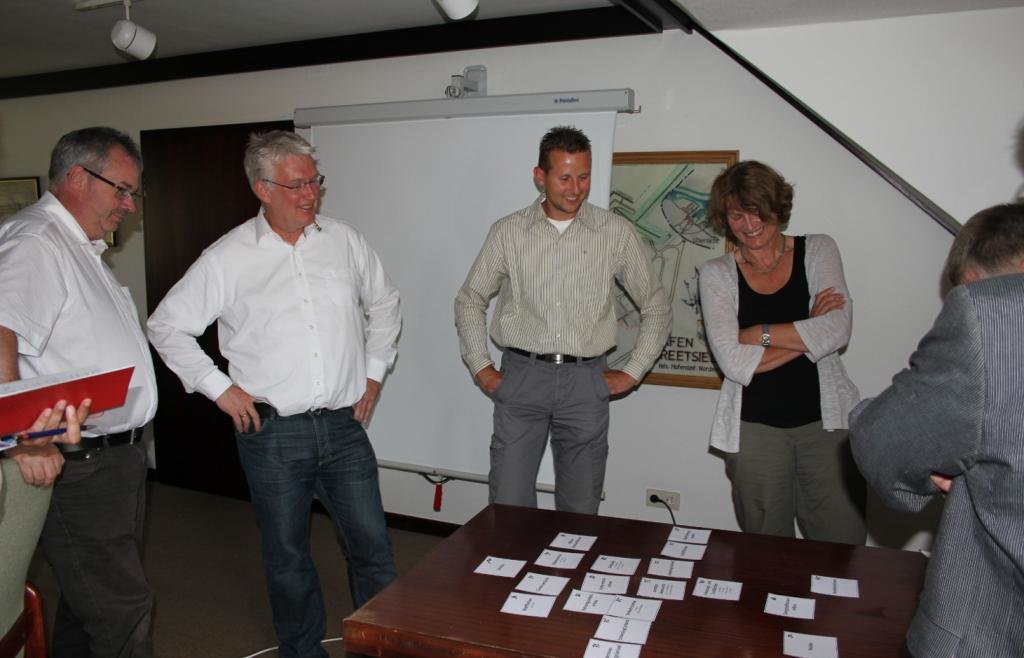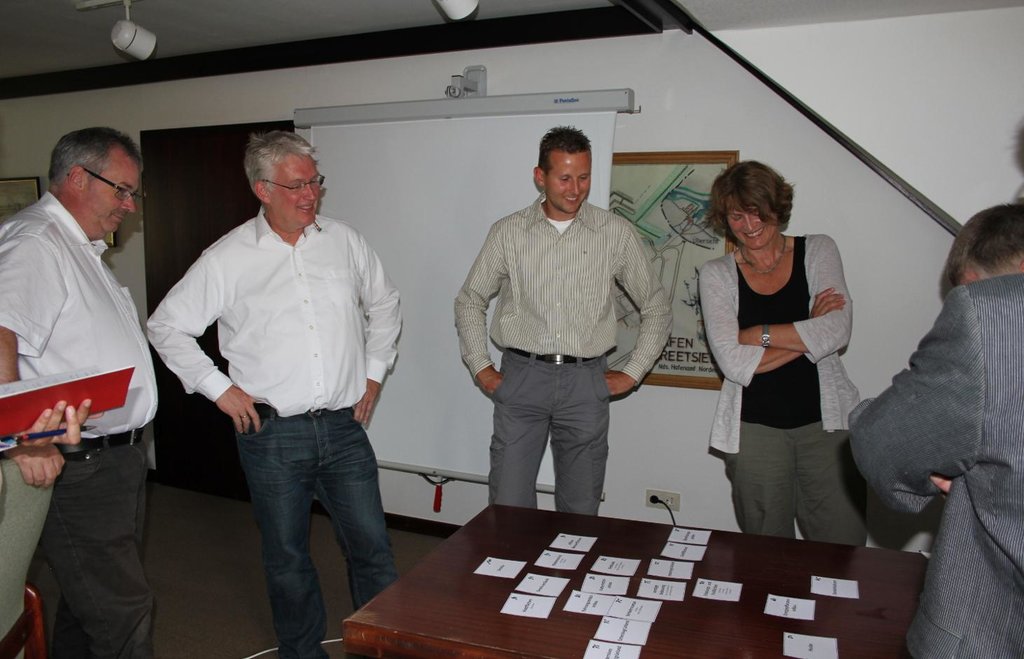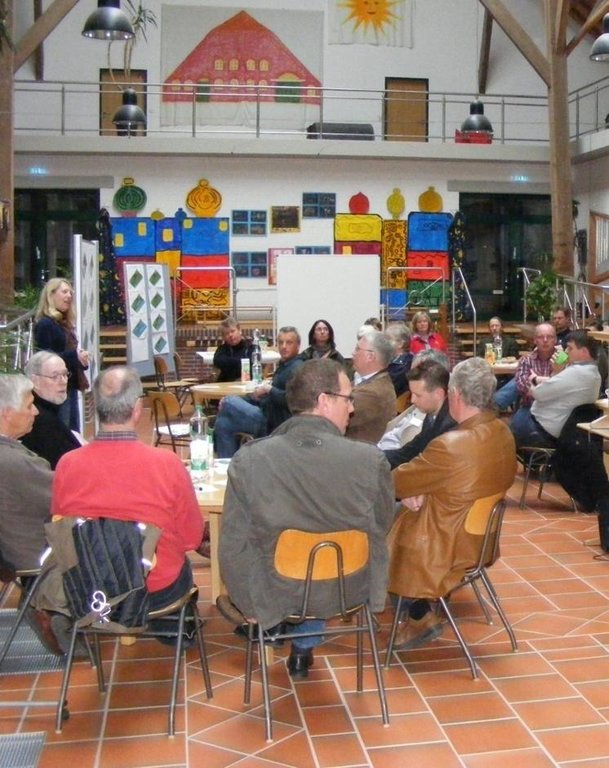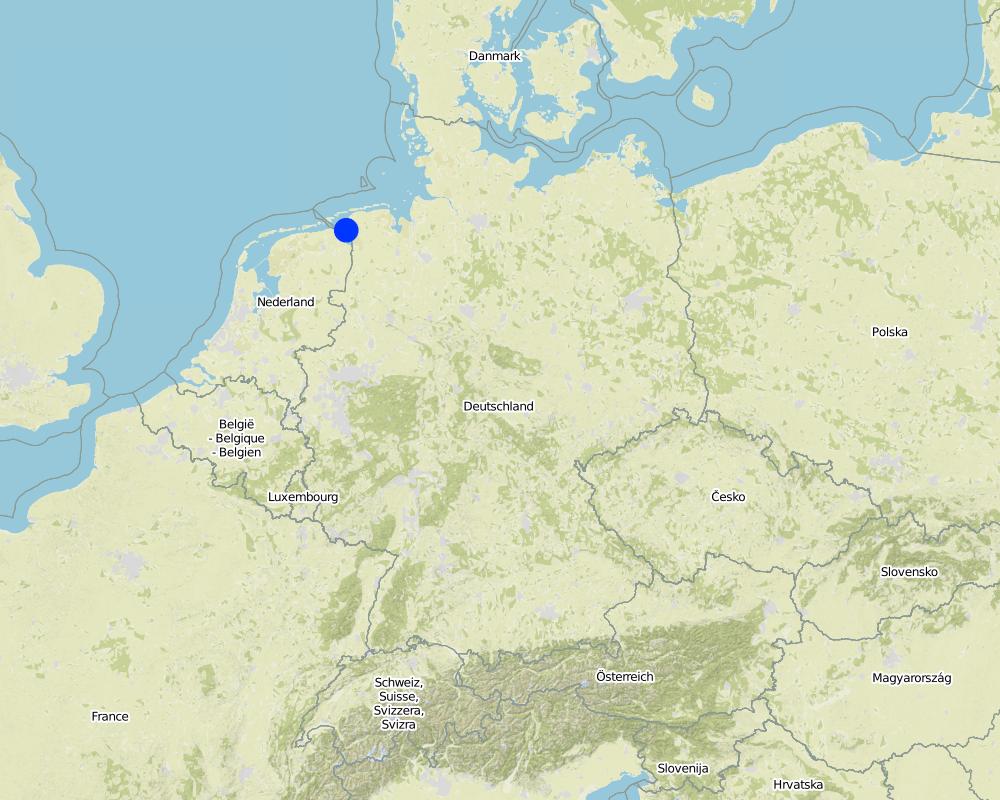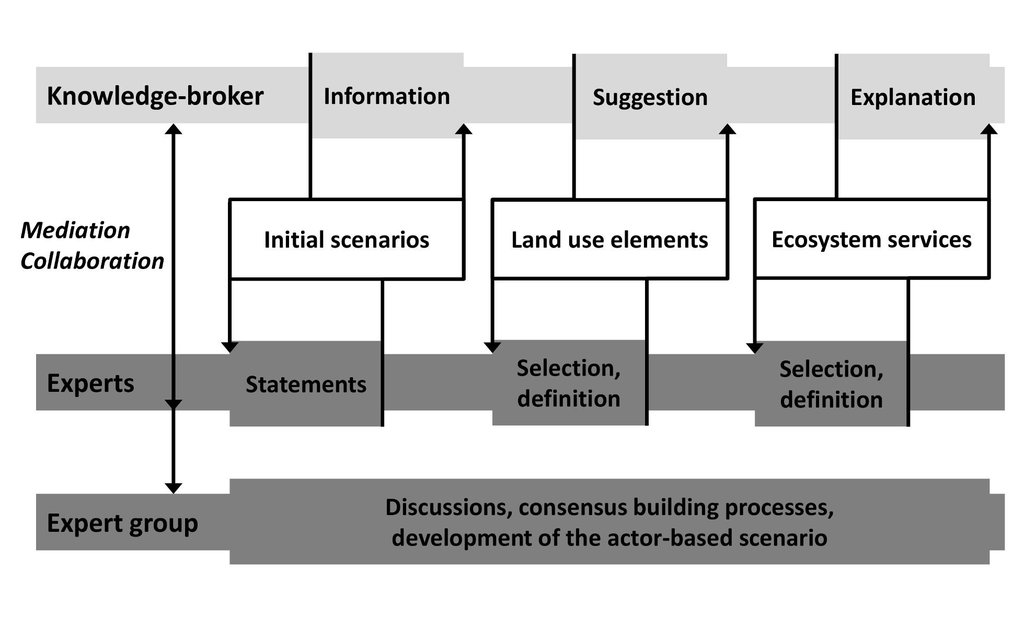Stakeholder participation in integrated assessment and planning of vulnerable coastal regions [Alemania]
- Creación:
- Actualización:
- Compilador: Martin Maier
- Editor: –
- Revisores: Fabian Ottiger, Deborah Niggli
Stakeholder Partizipation und integrative Entscheidungshilfen für gefährdete Küstenregionen (deutsch)
approaches_2597 - Alemania
Visualizar secciones
Expandir todo Colapsar todos1. Información general
1.2 Detalles de contacto de las personas de referencia e instituciones involucradas en la evaluación y la documentación del Enfoque
Especialista MST:
Karrasch Lena
leena.karrasch@uni-oldenburg.de
University of Oldenburg
D-26111, Oldenburg
Alemania
Nombre del proyecto que facilitó la documentación/ evaluación del Enfoque (si fuera relevante)
Sustainable Coastal Land Management (COMTESS / GLUES)Nombre del proyecto que facilitó la documentación/ evaluación del Enfoque (si fuera relevante)
Book project: Making sense of research for sustainable land management (GLUES)Nombre de la(s) institución(es) que facilitaron la documentación/ evaluación del Enfoque si fuera relevante)
University of Oldenburg (University of Oldenburg) - Alemania1.3 Condiciones referidas al uso de datos documentados mediante WOCAT
¿Cuándo se compilaron los datos (en el campo)?
10/03/2015
El compilador y la/s persona(s) de referencia claves aceptan las condiciones acerca del uso de los datos documentados mediante WOCAT :
Sí
1.4 Referencia/s al/los Cuestionario(s) de Tecnologías MST
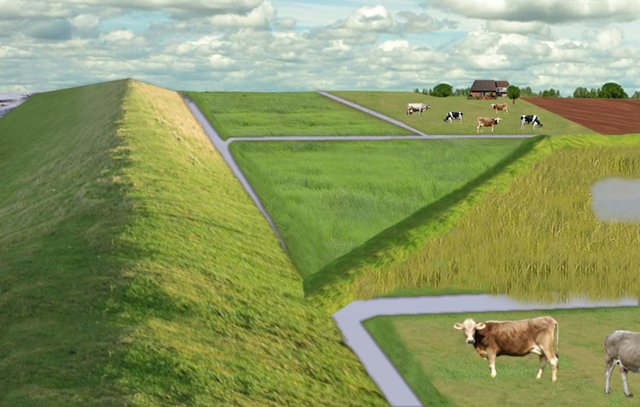
Water retention polders to improve water management [Alemania]
Water retaining polders to reduce flood risk due to heavy rainfall or runoff at high tide in embanked coastal lowlands. Delineation of the retention area and land use within the retention area was developed in a participatory process with local experts.
- Compilador: Martin Maier
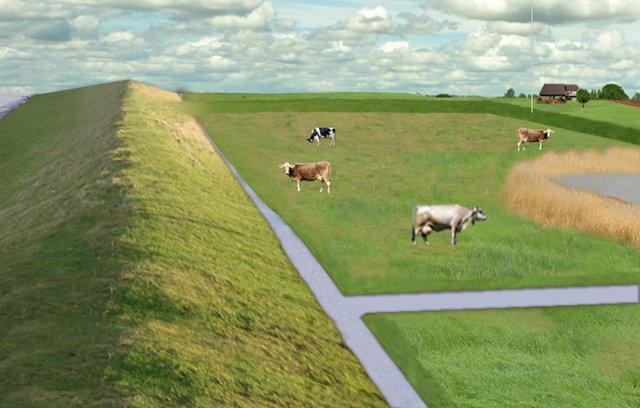
Water retention polders with adapted land use (North … [Alemania]
Water retaining polders to reduce flood risk from heavy rainfall or runoff at high tide in coastal lowlands. Alternative production systems will be viable within thesepolders.
- Compilador: Martin Maier
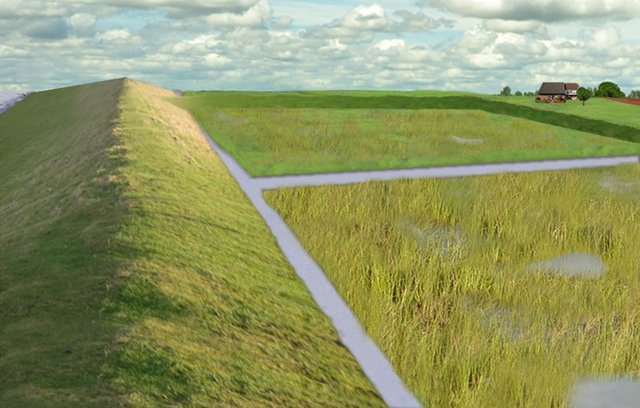
Water retention polders without agriculture to improve water … [Alemania]
Water retention polders to reduce flood risk due to heavy rainfall or runoff at high tide in coastal lowlands. The retention polders are used to accumulate organic material for climate change mitigation and enable development of undisturbed natural habitats, rather than for agriculture.
- Compilador: Martin Maier
2. Descripción del Enfoque MST
2.1 Breve descripción del Enfoque
Stakeholders have been involved in integrated assessment to develop action-oriented land use options addressing possible climate change adaptation measures as alternatives to traditional coastal protection strategies.
2.2 Descripción detallada del Enfoque MST
Descripción detallada del Enfoque MST:
Aims / objectives: The SLM approach described here comprises knowledge transfer between the scientific community and practitioners through a “stakeholder-scientist partnership”. The exchange of individual positions, interests and needs concerning spatial planning activities and sustainable land use management was very important. This was also true for the investigation of relationships and interactions between the different stakeholders. Furthermore, a stakeholder-based definition of land use elements and ecosystem services enabled the stakeholders to work with scientific concepts. Land use elements are delineated spatial areas related to one specific use of land, such as arable fields, infrastructure or aquatic areas. Ecosystem services, by definition the benefits people obtain from ecosystems, include provisioning, regulation, cultural and supporting services. The assessment of stakeholder preferences concerning each land use element and ecosystem service allowed an evaluation by scientists and researchers. All suggestions made by the stakeholders are included in the project results.
Methods: In total, there were 38 qualitative interviews carried out about the stakeholders opinion concerning sustainable and adaptive land use management (with one representative from each sector), 14 quantitative interviews to determine the relationship between land use elements and ecosystem services, several telephone and email conversations, 7 focus groups (interviews with more than one representative of each sector), and 4 regional forums (attended by representatives of all sectors). Each participatory process addressed a specific issue, such as determining preferences, relationships or scenario development. These plenaries provided a platform for stakeholder discussions, group assessments and consensus-building processes on the different issues. The focus groups were built to discuss sector-specific issues in greater depth and to support the joint decision-making process. All the results were triangulated and validated.
Role of stakeholders: A heterogeneous expert group including all relevant actors (incl. land users) in the case study region was convened. Fourteen local and regional stakeholders acted as representatives of the various sectors: water management, nature conservation, agriculture, regional and local governmental bodies, and tourism. They covered all relevant fields and levels (from administrative to policy) of decision-making in the community of Krummhörn. The role of the researcher during the participatory governance process is characterised as the “knowledge-broker”. The knowledge-broker acted at the interface between research and the stakeholders. The tasks were to provide the context (land use) and detailed information (ecosystem services) and determine decision-alternatives (land management scenarios) enabling and clarifying the freedom of choice. Additionally, the knowledge-broker translated research results to facilitate the dialogue between the different sectors and strengthen collaboration.
2.3 Fotos del Enfoque
2.5 País/ región/ lugares donde el Enfoque fue aplicado
País:
Alemania
Región/ Estado/ Provincia:
Germany, Lower Saxony
Especifique más el lugar :
County of Aurich, community of Krummhörn
Map
×2.6 Fechas de inicio y conclusión del Enfoque
Indique año del inicio:
2011
Año de conclusión (si el Enfoque ya no se aplica):
2015
2.7 Tipo de Enfoque
- proyecto/ basado en un programa
2.8 Propósitos/ objetivos principales del Enfoque
The Approach focused mainly on other activities than SLM (Disaster risk reduction, stakeholder engagement)
The aim of the approach is to foster a more sustainable and adaptive future land use management process by including social, ecological and economic impacts of possible developments in the decision-making processes.
The SLM Approach addressed the following problems: Coastal zones with their natural and societal sub-systems are exposed to rapid changes and pressures on resources. Scarcity of space and impacts of climate change are dominant drivers of land use and adaptation management today. The population of vulnerable coastal regions has to deal with these complex problems, and to develop suitable options for land use and adaptation management considering socio-economic and environmental changes and their impacts on the land management, and vice-versa the impact of land management on the socio-economy and the environment. Future land use management needs to focus on the interactions of the entire human-nature system, aiming at more sustainable development while focusing on the benefits that ecosystems provide for people.
2.9 Condiciones que facilitan o impiden la implementación de la/s Tecnología/s aplicadas bajo el Enfoque
normas y valores sociales/ culturales/ religiosos
- impiden
The stakeholders are concerned that the land their ancestors reclaimed from the sea might be taken back again. Furthermore, the stakeholders feared that current flood protection structures would be endangered by new developments such as water retention areas.
Treatment through the SLM Approach: Provide a platform for direct knowledge exchange between different stakeholders and scientists and joint development of land management options, ensuring active participation in transparent decision-making, and providing positive outcomes for all participants.
disponibilidad/ acceso a recursos y servicios financieros
- impiden
The land used as a retention area is partially available for other land use. High costs for construction and development of retention area.
Treatment through the SLM Approach: Explanation of benefits provided by nature (ecosystem services). Calculation of expected
costs without changes in land management such as increased pumping costs.
entorno institucional
- impiden
Disagreement between different sectors.
Treatment through the SLM Approach: Consensus finding through a participatory process.
marco de trabajo legal (tenencia de tierra, derechos de uso de tierra y agua)
- facilitan
No effect of land ownership or water rights on the approach.
3. Participación y roles de las partes interesadas involucradas
3.1 Partes interesadas involucradas en el Enfoque y sus roles
- usuarios locales de tierras/ comunidades locales
County of Aurich and community of Krummhörn
Agriculture, water management, tourism, nature conservation. There has been no discrimination inside the communities up to now.
- especialistas MST/consejeros agrícolas
Project members (scientists)
- investigadores
- gobierno local
Waterboard and Dike authorities
Regional planning (county)
- gobierno nacional (planificadores, autoridades)
Major. Most decision makers are male
3.2 Involucramiento de los usuarios locales de tierras/ comunidades locales en las distintas fases del Enfoque
| Involucramiento de los usuarios locales de tierras/ comunidades locales | Especifique quién se involucró y describa las actividades | |
|---|---|---|
| iniciación/ motivación | interactivo | Stakeholder analysis (snowball-principle) to include all interest groups |
| planificación | interactivo | Local and regional decision-makers designed an actor-based scenario. They defined relevant land use elements and ecosystem services. The stakeholders ranked the land use elements and ecosystem services according to their preferences. Furthermore, they determined how important one land use element for a certain ecosystem service is. |
| implementación | interactivo | The regional spatial planning authority implements the results from the approach. |
| monitoreo y evaluación | ninguno | Not yet |
| Research | pasivo | The stakeholders have been informed about the research results. |
3.3 Flujograma (si estuviera disponible)
Descripción:
Description of the interactions between knowledge-broker (scientist), individual experts (local and regional decision-makers) and the expert group. The initial scenarios prepared by researchers informed the expert about different land use options. The experts gave statements judging the initial scenarios. Based on this feedback the researcher suggested land use elements and explained ecosystem services which have been selected and defined by the experts. These information were used by the expert group to discuss and develop the actor based scenario.
Autor:
Leena Karrasch (COAST – University of Oldenburg)
3.4 La toma de decisiones en la selección de Tecnología(s) MST
Especifique quién decidió la selección de las Tecnología/ Tecnologías a implementarse:
- principalmente por especialistas MST en consulta con usuarios de tierras
Explique:
Decisions were made by the stakeholder group. Guided consensus building processes on different land management topics.
Decisions on the method of implementing the SLM Technology were made by mainly by land users supported by SLM specialists. Decisions were made by the stakeholder group. Guided consensus building processes on different land management topics.
4. Apoyo técnico, fortalecimiento institucional y gestión del conocimiento
4.1 Construcción de capacidades / capacitación
¿Se proporcionó la capacitación a usuarios de tierras/ otras partes interesadas?
Sí
Especifique quién fue capacitado:
- usuarios de tierras
- personal de campo/ consejeros
- decision maker
Forma de capacitación:
- de agricultor a agricultor
- áreas de demostración
- reuniones públicas
- cursos
Forma de capacitación:
- knowledge brokerage
Temas avanzados:
Training focused on possible consequences of climate change.
4.2 Servicio de asesoría
¿Los usuarios de tierras tienen acceso a un servicio de asesoría?
Sí
Describa/ comentarios:
Advisory service is very adequate to ensure the continuation of land conservation activities; They are aware of possible adaptation measures, based on scientific information and group consensus building.
4.3 Fortalecimiento institucional (desarrollo institucional)
¿Se establecieron o fortalecieron instituciones mediante el Enfoque?
- no
4.4 Monitoreo y evaluación
Comentarios:
There were no changes in the Approach as a result of monitoring and evaluation: Not relevant
There were no changes in the Technology as a result of monitoring and evaluation
4.5 Investigación
¿La investigación formó parte del Enfoque?
Sí
Especifique los temas:
- sociología
- economía/ marketing
- ecología
- tecnología
Proporcione detalles adicionales e indique quién hizo la investigación:
A transdisciplinary research project worked on providing information and collecting data concerning sociology, economics, ecology and technology. This information was used for the work with the stakeholders, to illustrate possible future scenarios and available land management options with their consequences. The results are shown in technology T_GER003en. Furthermore these results were fed in to models based on climate change and sea level rise scenarios. These models show the effects of the proposed land management on the ecosystem services provided in the region.
Research was carried out both on station and on-farm
5. Financiamiento y apoyo material externo
5.1 Presupuesto anual para el componente MST del Enfoque
Si no se conoce el presupuesto anual preciso, indique el rango:
- 10,000-100,000
Comentarios (ej. fuentes principales de financiamiento/ donantes principales):
Approach costs were met by the following donors: government (Federal Ministry of Education and Research BMBF): 100.0%
5.2 Apoyo financiero/material proporcionado a los usuarios de tierras
¿Los usuarios de tierras recibieron financiamiento/ apoyo material para implementar la Tecnología/ Tecnologías? :
No
5.3 Subsidios para insumos específicos (incluyendo mano de obra)
- ninguno
Comentarios:
Labour was not rewarded
5.4 Crédito
¿Se proporcionó crédito bajo el Enfoque para actividades MST?
No
6. Análisis de impacto y comentarios de conclusión
6.1 Impactos del Enfoque
¿El Enfoque ayudó a los usuarios de tierras a implementar y mantener Tecnologías MST?
- No
- Sí, un poco
- Sí, moderadamente
- Sí, mucho
Awareness of challenges and understanding related to land use due to climate change was increased and support to design desired future land management was provided. Ideas for more sustainable land management have been spatially implemented in the regional plan.
¿El Enfoque empoderó a grupos en desventaja social y económica?
- No
- Sí, un poco
- Sí, moderadamente
- Sí, mucho
It may improve the situation of socially and economically disadvantaged groups in future.
Did other land users / projects adopt the Approach?
- No
- Sí, un poco
- Sí, moderadamente
- Sí, mucho
Regional plan ('Regionales Raumordnungsprogramm') for the county of Aurich adopted the approach to tackle the impact of climate change.
Did the Approach lead to improved livelihoods / human well-being?
- No
- Sí, un poco
- Sí, moderadamente
- Sí, mucho
It may improve livelihoods in future.
Did the Approach help to alleviate poverty?
- No
- Sí, un poco
- Sí, moderadamente
- Sí, mucho
Poverty is not the issue addressed by this approach.
6.2 Motivación principal del usuario de la tierra para implementar MST
- producción incrementada
- incremento de la renta(bilidad), proporción mejorada de costo-beneficio
indirect via adapted land use
- conciencia medioambiental
only environmental consciousness
- mejoramiento estético
- well-being and livelihoods improvement
including prevention of damage during extreme events.
- decision support
decision support for decision makers
6.3 Sostenibilidad de las actividades del Enfoque
¿Pueden los usuarios de tierras sostener lo que se implementó mediante el Enfoque (sin apoyo externo)?
- sí
Si respondió que sí, describa cómo:
It is very likely, that the involved stakeholder meet in future for continuation of the participatory process.
6.4 Fortalezas/ ventajas del Enfoque
| Fuerzas/ ventajas/ oportunidades desde la perspectiva del usuario de la tierra |
|---|
| The work on a common goal improves decision-making processes. |
| Research and scientists provide evidence and scenarios. They translated research results to facilitate the dialogue between the different sectors and strengthen the collaboration. |
| Active participation in transparent decision-making lead to positive outcomes for all participants. Participation is a positive and practical way to overcome controversial issues. |
| Fuerzas/ ventajas/ oportunidades desde la perspectiva del compilador o de otra persona de referencia clave |
|---|
| Together with stakeholders of the region, concrete and action oriented adaptive strategies will be developed. |
|
Stakeholder collaboration promotes social learning processes, consideration of different world-views and cooperation and agreements. |
| Stakeholder engagement as important tool for implementing sustainable development and link cross-sectoral interests. |
|
Stakeholders help to identify risks, impacts and values. |
| Stakeholders provide input to planning processes, they are meaningful partners and provide local knowledge. |
6.5 Debilidades/ desventajas del Enfoque y formas de sobreponerse a ellos
| Debilidades/ desventajas/ riesgos desde la perspectiva del usuario de la tierra | ¿Cómo sobreponerse a ellas? |
|---|---|
| Different world-views of different participants. | Sufficient time for interaction and exchange. Be open minded. |
| Time consuming meetings. | Motivation, give feedback, ongoing information process (learning and knowledge exchange). |
|
Scientific concepts are not easy understandable. |
Use of simple language and avoidance of scientific jargon. |
| Debilidades/ desventajas/ riesgos desde la perspectiva del compilador o de otra persona de referencia clave | ¿Cómo sobreponerse a ellas? |
|---|---|
|
The work with stakeholders is time intensive and challenging. |
Highling the benefits and the time and commitment gained compared to approaches which do not include the stakeholders and what the consequences are. |
| It is difficult to include all different interests. | Make the project interesting for everyone. Elaborate different options depending on the different interest and discuss the output (benefits and trade-offs). |
| Keep all stakeholders together. | Give feedback, ongoing information process. |
| “Subjective” character of research. | Trying to be as objective as possible. |
7. Referencias y vínculos
7.1 Métodos/ fuentes de información
- visitas de campo, encuestas de campo
- entrevistas con usuarios de tierras
7.2 Referencias a publicaciones disponibles
Título, autor, año, ISBN:
Linking the ecosystem services approach to social preferences and needs in integrated coastal land use management – A planning approach, Leena Karrasch, Thomas Klenke, Johan Woltjer, 2014
¿Dónde se halla disponible? ¿Costo?
Land Use Policy 38, 522-532; http://www.sciencedirect.com/science/article/pii/S0264837713002718
Vínculos y módulos
Expandir todo Colapsar todosVínculos

Water retention polders to improve water management [Alemania]
Water retaining polders to reduce flood risk due to heavy rainfall or runoff at high tide in embanked coastal lowlands. Delineation of the retention area and land use within the retention area was developed in a participatory process with local experts.
- Compilador: Martin Maier

Water retention polders with adapted land use (North … [Alemania]
Water retaining polders to reduce flood risk from heavy rainfall or runoff at high tide in coastal lowlands. Alternative production systems will be viable within thesepolders.
- Compilador: Martin Maier

Water retention polders without agriculture to improve water … [Alemania]
Water retention polders to reduce flood risk due to heavy rainfall or runoff at high tide in coastal lowlands. The retention polders are used to accumulate organic material for climate change mitigation and enable development of undisturbed natural habitats, rather than for agriculture.
- Compilador: Martin Maier
Módulos
No se hallaron módulos


